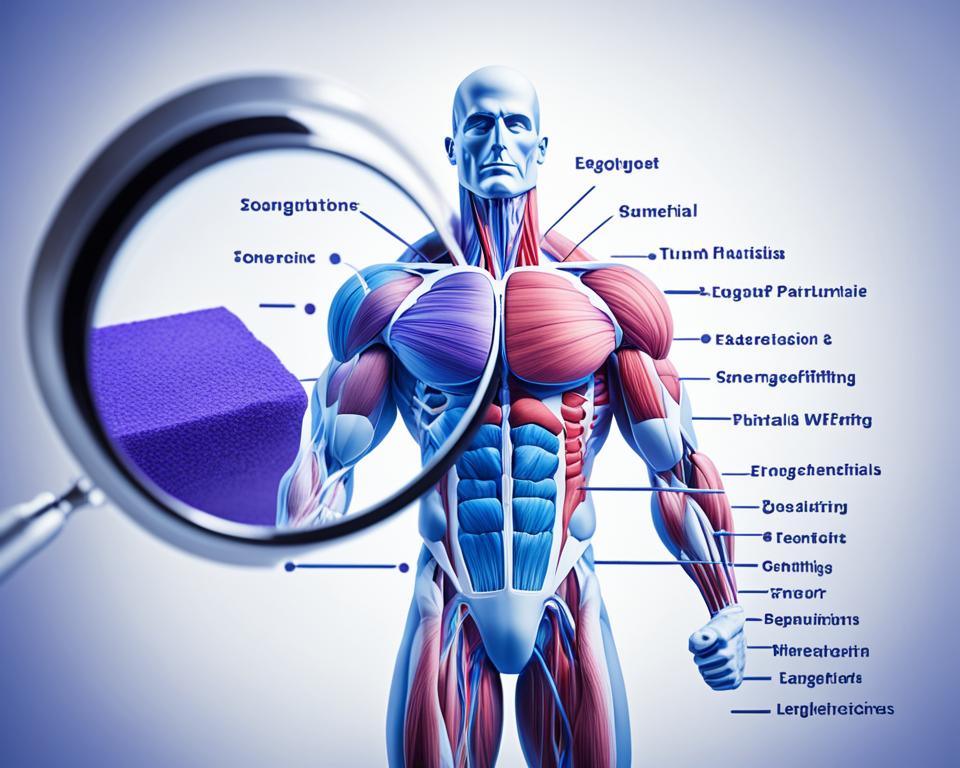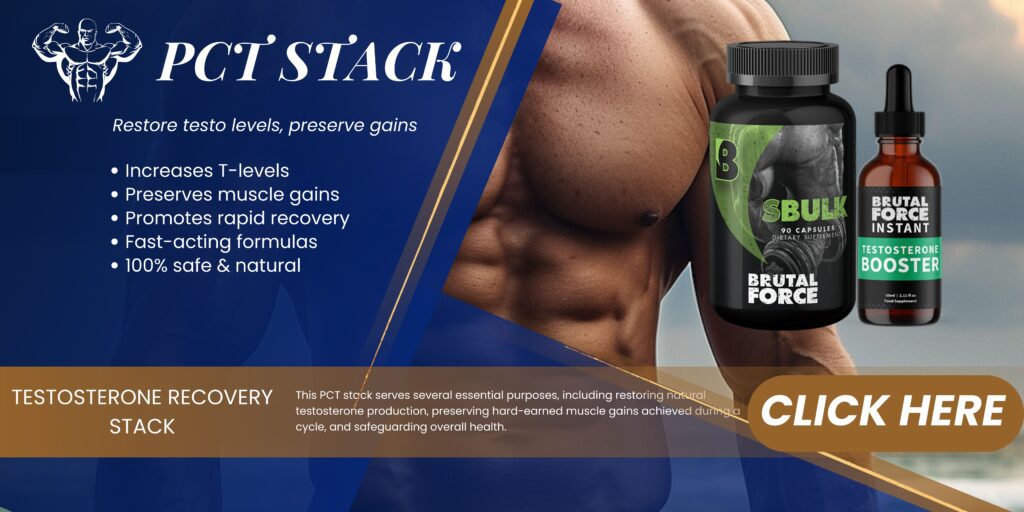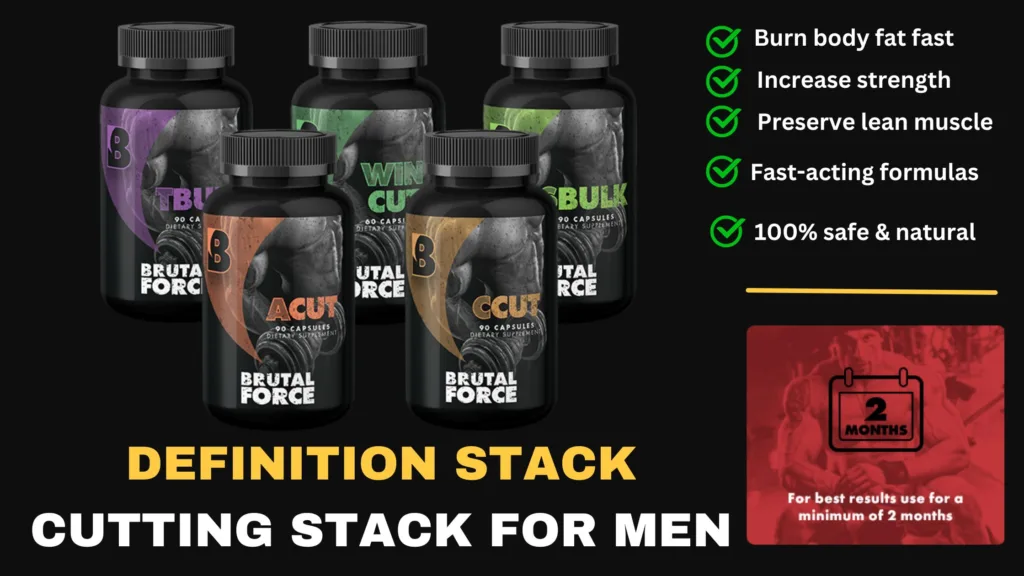Lengthened Partials
Recent studies show a new way to boost muscle growth. It’s through the longer or stretched part of your lifts. This finding has made “lengthened partials” very popular. These are movements that only focus on the stretched part of an exercise, keeping the muscle in constant tension.
One research project proved the benefits. People doing lengthened partials grew about 15% more muscle. This is compared to using shorter motions or full exercises. The reason is linked to how stretching muscle fibers can cause more growth.
Key Takeaways
- Lengthened partials focus on the stretched portion of an exercise, leading to greater muscle growth
- Research suggests a 5-10% improvement in muscle hypertrophy with long-length partials compared to full range of motion
- Certain exercises like knee extensions, skull crushers, and calf raises see significant benefits from partial range training
- Lengthened partials can be effectively incorporated into workouts as a finisher or integrated within sets
- Proper form and standardized range of motion are crucial to maximize the effectiveness of lengthened partials
What Are Lengthened Partials?
Lengthened partials, also known as eccentric exercises or negative reps, are a type of resistance training technique that focuses on muscle lengthening. Unlike traditional strength training exercises that primarily emphasize the concentric phase, which is the muscle contraction, lengthened partials put more emphasis on the eccentric phase, which is the muscle elongation. This type of training has gained popularity in recent years due to its potential benefits for muscle growth and adaptation.
During lengthened partials, the muscle fibers are stretched while actively resisting the force. This causes a greater activation of the muscle and places a higher demand on the tissues, leading to increased muscle protein synthesis and subsequent muscle growth. It is believed that the mechanical stress and metabolic responses generated during eccentric contractions play a major role in stimulating muscle adaptation.
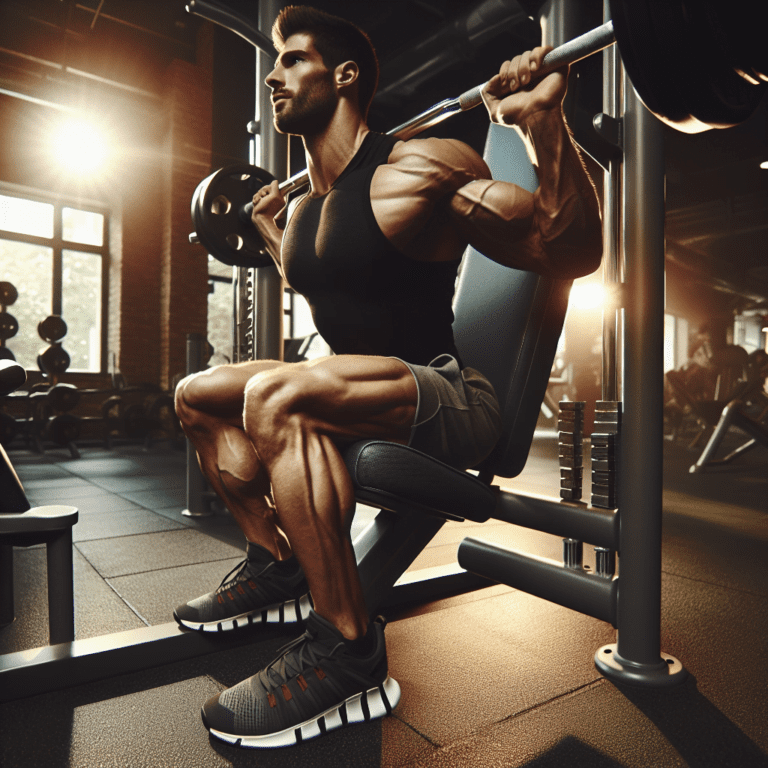
Research has shown that lengthened partials can lead to greater increases in muscle size and strength compared to traditional concentric-focused exercises. Additionally, they have been found to be effective in rehabilitating muscle imbalances and preventing injuries. This is because eccentric training can enhance muscle-tendon unit stiffness, which helps improve joint stability and control.
Incorporating lengthened partials into your training routine can be done by gradually increasing the eccentric phase of an exercise, either by increasing the range of motion or using additional resistance. However, it is important to note that lengthened partials can be more demanding on the muscles and may increase the risk of muscle soreness and injury. Therefore, it is recommended to start with lighter weights and gradually progress as your muscles adapt.
Lengthened partials, or long-length partials, are a special way to train. They focus on stretching the muscle during exercise. This is different from traditional exercises that work muscles when they are shortened. By targeting the stretched position, we can boost muscle growth and see big improvements.
Long-Length Partials vs. Short-Length Partials
When it comes to strength training, one question that often arises is whether it is more effective to perform exercises with a long-range of motion or with a short-range of motion, known as long-length partials and short-length partials, respectively. Both have their pros and cons, and the choice depends on individual goals and preferences.
Long-length partials involve performing an exercise through its full range of motion. This allows for a greater muscle stretch and contraction, leading to increased muscle fiber recruitment and development. With a complete range of motion, different muscle groups are engaged at different points, resulting in overall muscle development and improved flexibility. However, some argue that long-range movements may increase the risk of muscle overload and joint strain if proper form and control are not maintained.
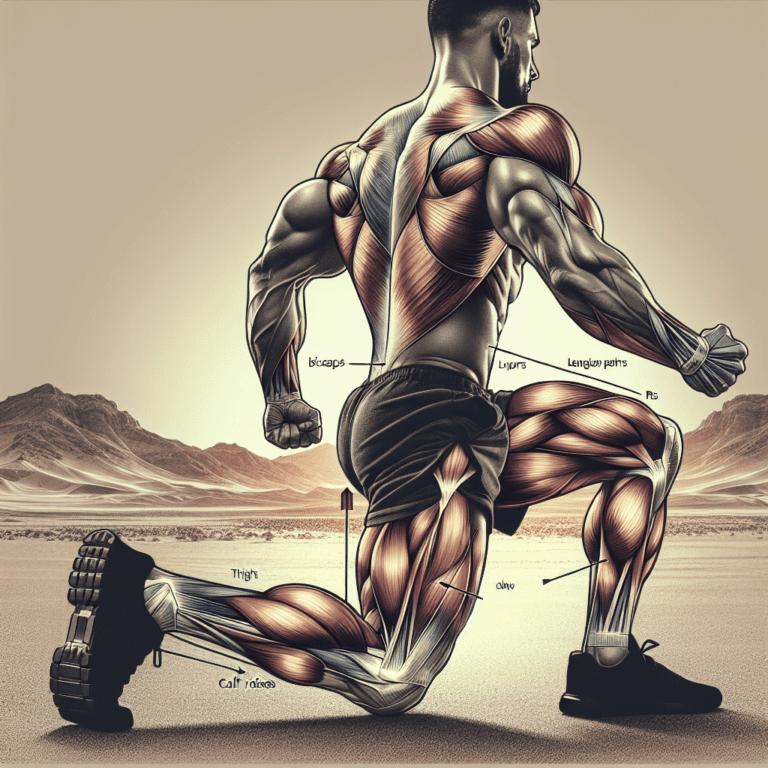
On the other hand, short-length partials focus on a specific portion of the exercise, typically the most challenging part. By performing repetitions in a smaller range of motion, the targeted muscles are subjected to increased tension and workload, leading to greater muscle activation and strength gains. This approach is particularly useful for individuals looking to overcome specific sticking points in their lifts. However, relying solely on short-range movements may neglect other muscle groups and limit overall muscle development.
Ultimately, the choice between long-length and short-length partials boils down to personal preferences and goals. If the aim is to develop overall strength and muscle mass, incorporating a mix of both long and short-range movements may be beneficial. This strategy allows for balanced development, while also targeting specific areas of weakness. Proper form, control, and gradual progression should always be emphasized to minimize the risks of muscle overload or strain. As with any training technique, consulting with a qualified fitness professional is recommended to tailor the approach to individual needs and ensure safety and effectiveness.
The main difference between long and short-length partials is the motion emphasized. Long-length partials concentrate on the stretch or bottom phase of a move, like the lowest point of a squat. Meanwhile, short-length partials target the top range or contracted phase.
Long-Length Partials vs. Full ROM
When it comes to strength training and flexibility, there are two popular techniques that often spark debate: long-length partials and full range of motion (ROM) exercises. Both methods have their benefits and their drawbacks, making it important to understand the differences and determine which approach is most suitable for your fitness goals.
Long-length partials
Long-length partials involve performing exercises with a greater range of motion than traditionally prescribed. By moving the muscle through a longer length, you can work on increasing flexibility and mobility. This technique can be especially beneficial for individuals who are trying to improve their range of motion and reduce muscle tightness. Long-length partials also target the muscles at extended positions, providing a more intense contraction and potentially enhancing muscle growth.
Benefits of Long-Length Partials
- Increased Muscle Growth: Research suggests that training with long-length partials can lead to greater muscle growth compared to full ROM, particularly in exercises where the muscle is most stretched.
- Improved Muscle Strength: Long-length partials can help improve muscle strength, especially in the stretched position.
- Enhanced Muscle Recruitment: This technique can help recruit more muscle fibers, especially in the stretched position, leading to greater muscle growth and strength.
Full ROM
On the other hand, full ROM exercises involve moving the muscle through its complete range of motion. This technique allows for greater muscle activation and overall strength development. By ensuring that the muscles are worked through their entire range, full ROM exercises can lead to improved muscle balance and joint stability. Additionally, these exercises can help prevent muscle imbalances and reduce the risk of injury.
Benefits of Full ROM
- Comprehensive Muscle Development: Full ROM exercises ensure that the muscle is worked through its entire range of motion, leading to more comprehensive muscle development.
- Better Strength Gains: Studies show that full ROM exercises lead to better strength gains and more effectively catalyze muscle hypertrophy.
- Practicality: Full ROM exercises are often more practical and easier to incorporate into a workout routine
While long-length partials and full ROM exercises both have their advantages, it’s important to consider the potential impact on muscle fatigue and relaxation. Long-length partials may require more effort and exertion, leading to increased muscle fatigue. This can be beneficial for individuals looking to push their limits and increase muscle endurance. On the other hand, full ROM exercises generally provide a more balanced activation of muscles and allow for better muscle relaxation in between repetitions.
When to Use Each Technique
- Long-Length Partials:For exercises where the muscle is most stretched, such as the bottom half of a bicep curl or squat.For those who want to focus on stretch-mediated As a supplement to traditional full ROM training to vary the workout routine.
- Full ROM:For exercises where the muscle is worked through its entire range of motion, such as squats, deadlifts, and bench press.For those who want to ensure comprehensive muscle As the primary training method for most exercises
In comparison to exercises that cover the full range of motion, long-length partials avoid the muscle’s contracted phase. This strategy aims to work the muscle when it’s fully stretched. Scientists believe this approach might lead to more significant muscle growth and change in structure.
“Participants doing lengthened partials in the study by Sato and colleagues gained 2.6 times more muscle compared to those doing shortened partials.”
Studies indicate that stretching, not contracting, is key for muscle growth. Concentrating on the stretch part of exercises maximizes this effect. It can lead to more muscle growth than traditional training methods.
Adding lengthened partials to workouts can really boost muscle building. We’ll take a closer look at the advantages and how to use this method effectively soon.
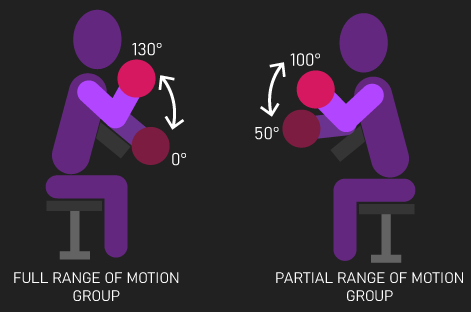
Benefits of Lengthened Partials
Adding lengthened partial exercises to your workouts gives several benefits. These go beyond those from regular full range exercises. You’ll see more muscle growth, better muscle use, and lower risk of getting hurt.
Increased Muscle Growth
Have you ever wondered how to maximize your muscle growth? If you’re tired of spending countless hours at the gym with minimal results, then it’s time to explore the concept of increased muscle growth. One approach that has gained attention in recent years is focusing on long muscle lengths during resistance training.
When we perform exercises with a full range of motion, allowing our muscles to stretch and lengthen, we activate more muscle fibers and stimulate greater muscle growth. This is because long muscle lengths create more tension within the muscle, leading to a greater stimulus for hypertrophy. So, it’s not just about lifting heavy weights; it’s also about utilizing a full range of motion to achieve optimal results.
Another important factor in increasing muscle growth is muscle recovery. After intense workouts, our muscles undergo small amounts of damage that need to be repaired. This repair process is crucial for muscle growth. By prioritizing proper rest, nutrition, and recovery techniques, we can enhance the recovery process and promote muscle growth.
Stretch-mediated hypertrophy is another intriguing concept in the world of muscle growth. Research suggests that stretching exercises, when performed after resistance training, can lead to additional growth in muscle size. This is thought to be due to a combination of increased blood flow and mechanical stretching, which helps to expand the muscle fibers and stimulate their growth.
Studies show that doing lengthened partials can make your muscles grow more. Triceps, calves, and quadriceps get bigger with partial range exercises. You might see a 5-10% muscle growth improvement versus full motions.
Improved Muscle Recruitment
Lengthened partials make your muscles work harder in their longest position. This leads to better muscle use. Your muscles might grow stronger and bigger because of how these exercises work.
Reduced Injury Risk
Doing full range exercises can sometimes lead to injuries, especially if you’re not very flexible. But, lengthened partials let you move in a safer way. This lowers the chance of hurting your joints or muscles.
Increased Time Under Tension
Lengthened partials keep your muscles working hard for longer. This added pressure can boost your muscle growth. You focus on the stretching part of exercises, which helps your muscles get stronger over time.
Improved Muscle Quality
Working with lengthened partials can make your muscles better in quality. That means they work and look better. Your risk of getting hurt might also go down because your muscles are in top shape.
Increased Muscle Damage
Lengthened partials could also give you more muscle damage. This is good because it helps your muscles grow. They get used to tougher workouts and get stronger as a result.
Adding lengthened partials to your fitness routine is a smart move. It boosts muscle growth, better muscle use, and cuts injury risks. Knowing the pluses of this approach can really up your fitness game.
Which Exercises Are Best for Lengthened Partials?
For getting the most out of lengthened partials, choosing the right exercises is key. You want exercises where your muscle is fully stretched at the bottom of the movement. Studies show these exercises can boost muscle growth and strength a lot.
Research points to exercises such as leg extensions, bicep curls, and calf raises as working well with lengthened partials. They help muscles grow bigger than when using a full range of motion. That’s because these moves put the muscle in a deep stretch at the lowest point.
Compound exercises like pull-ups and cyclist squats are also great for lengthened partials. At the bottom, these exercises stretch the muscles fully. So, you can really focus on loading that stretched position to grow your muscles more effectively.
| Exercise | Muscle Targeted | Benefit of Lengthened Partials |
|---|---|---|
| Pull-ups | Lats, Biceps | Greater muscle activation and hypertrophy in the lats and biceps |
| Cyclist Squats | Quadriceps | Increased quadriceps muscle growth compared to full ROM squats |
| Dumbbell Chest Flys | Pectoralis Major | Heightened pectoral muscle engagement and hypertrophy |
| Dumbbell Bicep Curls | Biceps Brachii | Greater distal biceps hypertrophy than full ROM curls |

Best exercises for lengthened partials
Machine Chest Presses: Use machine chest presses to focus on the bottom half of the movement, where the chest muscles are stretched.
Dips and Deficit Push-Ups: Train the chest under deep stretch by focusing on the bottom half of dips and deficit push-ups.
Overhead Triceps Extensions: Perform the bottom half of overhead triceps extensions to target the triceps under stretch.
Cable Lateral Raise: Use cable lateral raises to target the medial portion of the shoulders under stretch.
Decline Reverse Crunch: Perform the decline reverse crunch to target the abdominals under stretch
Adding these exercises and focusing on the lengthened partial range is a game-changer for muscle growth. Always choose movements where your muscle is fully stretched at the bottom. This is crucial for unlocking new muscle growth and strength.
How to Include Lengthened Partials in Your Training
Adding lengthened partials to your workout can really boost muscle growth. But, it’s crucial to do it the right way. Here, we’ll look into two great methods for making the most out of this technique.
Use Lengthened Partials for Your Final Exercise or Final Set
Working with lengthened partials in your last exercise or set is highly effective. It pushes your muscles to work in the stretched position, which is great for growth. Scientific studies have proven that training muscles when they’re fully stretched can result in big gains.
Do “Integrated Partials”
Integrated partials are another smart move. You start with full reps and switch to partials mid-set until you can’t do any more. This approach mixes the benefits of both full and partial movements, giving your muscles a varied challenge.
Recent studies recommend using lengthened partials in about 25-50% of your sets. Begin with lighter weights, especially for big, compound exercises. Once you’re familiar, gradually up the weight as you refine your technique.
Proper form and technique are key for success with lengthened partials. Filming your workouts can help you check your form. With practice, you can unlock the potential of lengthened partials for muscle gains.
Extend Your Final Set with Lengthened Partials
Adding lengthened partials to your workout can be done by extending the final set. Do the exercise with full motion until just 1-2 reps are left. Then, use lengthened partials to push to failure again. This method might seem straightforward. Yet, studies show it might not be the best way to grow muscles. It’s better to use lengthened partials in a whole set or for an entire exercise.
A study by Larsen and others in 2024 found something interesting. They saw great muscle growth benefits when lengthened partials were added after full range of motion failure. This was especially true for muscles like the gastrocnemius. The research showed about 40% more muscle growth with lengthened partials than with full range training.
Another study, this time by Nippard’s team, showed that more time in the best part of the range can boost muscle growth. They focused on using lengthened partials for the whole last set. Known as “lengthened supersets”, this strategy means doing partial reps after reaching the full range of motion failure.
Extending your final set with lengthened partials might not be the top method, but it’s beneficial. This technique helps increase the time your muscles work and could help you get a few more reps. It’s important to keep your form and technique while using this method.
Common Mistakes with Lengthened Partials
Adding lengthened partials to your workouts can really boost muscle growth. But, it’s key to avoid two big mistakes. These are using bad form and not keeping the range of motion (ROM) the same with each rep.
Using Poor Form
When you do lengthened partials, it’s easy to start swinging weights or using momentum. This cheats the movement and can reduce how much your muscles work. It’s vital to stick to strict form. Focus on how your muscles tighten with each rep.
Not Standardizing ROM
Full-range-of-motion exercises have a clear start and end. But, with lengthened partials, this isn’t always obvious. It can be hard to keep your ROM the same each time. To fix this, find points on your body or equipment as guides. This ensures you use the same ROM spin every rep.
Steer clear of these mistakes by concentrating on good form and consistent ROM. This will help you fully benefit from lengthened partials. It can greatly improve your muscle growth efforts.
“Consistent form and range of motion are key when incorporating lengthened partials into your workout routine. Paying attention to these details will help you get the most out of this effective muscle-building technique.”
Using the “Wrong” Equipment
When trying lengthened partials in your workouts, choosing the right equipment is key. While barbells are popular, they may not be the best for this. The issue is, a barbell needs a full rep to safely put the weight back. Yet, after lengthened partials, you might not have the strength for that full rep.
The top advice is to go with machines or dumbbells for lengthened partials. These choices offer safety if you suddenly can’t lift the weight back up. This safety means you can work your muscles hard with those shorter reps.
For instance, a study published in the Journal of Strength and Conditioning Research showed something interesting. People using the leg press for long partial reps grew their quad size just as much as those doing full reps. On the leg press, you can lower the weight safely without a full repetition.
Another study found a big difference too. Those doing calf raises at the start of their range doubled their calf size compared to others. The trick was safely dropping the weight at the bottom, not doing a full rep.
If you aim to make the best of lengthened partial reps, consider machines or dumbbells. They’re safer and can boost your muscle growth. Choose wisely for better results and safety!
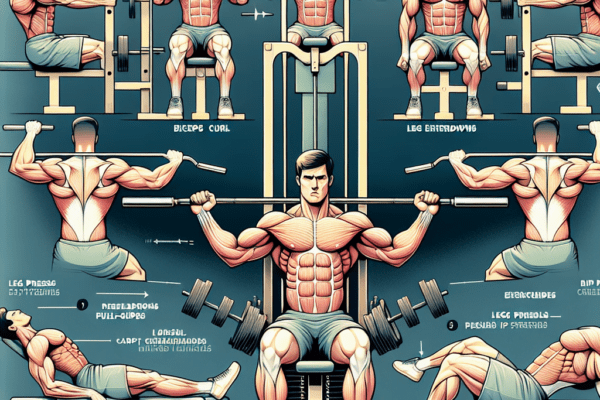
Lengthened Partials for Mobility Improvements
There’s no direct proof that lengthened partial training gives you better mobility. But, the idea behind this makes a lot of sense. Mobility is about moving easily and controlled through a full range of motion. When we stretch during exercise, we make our muscles work at their hardest. This helps us get better at moving freely.
Lengthened partials are very good for improving how we move. Regular exercise might not push our range of motion to its limit. But lengthened partials help us stretch our muscles a lot. This makes our bodies get better at moving in those difficult positions.
Just think of doing a bicep curl. Instead of going all the way down, you stop just before. This makes the muscle work harder. It learns to be stable in a tough spot. With time, doing exercises this way can really improve how we can move our arms.
It’s key to mix both lengthened partials and full-range exercises. This balanced approach is best for getting stronger and more flexible. If you want to really boost your movement abilities, adding some lengthened partials to your routine can be huge.
Incorporating Lengthened Partials into Your Workouts
Adding lengthened partials to your workouts is easy and effective. Use them at the end of your routine for better muscle growth and motion. This way, you don’t have to change your whole workout.
Try making the last set of each exercise a lengthened partial one. For instance, do the first 2 sets fully and the last using this technique. You’ll still enjoy the full motion’s benefits while adding those of lengthened partials.
Another way is to pick one exercise and do only lengthened partials with it. This could be a squat, bicep curl, or another move. Focusing on this for one exercise keeps your workout balanced.
Using “integrated partials” is also a great strategy. It means smoothly switching from full to partial motion during a lift. This helps keep your form good while you benefit from lengthened partials.
Start slowly when you add this technique to your workouts. Your body needs time to adjust. This approach ensures you get the most from this method.
“Adding lengthened partials to your training can really boost muscle growth and movement. Start small and slowly increase to benefit fully.”
By smartly adding lengthened partials, you open up new muscle-building opportunities. This method touts many benefits for your fitness routine.
Conclusion
Studying lengthened partials is new, but it offers hope. Studies hint it might grow muscles 5-10% more than full movements. It’s smart to add these into your gym routine, either at the end of your workouts or mixed in.
Make sure you keep good form and a set range of motion. People trying lengthened partials, like calf raises on a leg press with added stretch, saw great results. Their muscles almost doubled in size when compared to full movements.
Looking into partial rep training, we find lengthened partials really stand out. They can help boost muscle growth, power, and how fit you are. This approach definitely seems worth trying. The important facts on lengthened partials in this article give a great start to using them.







